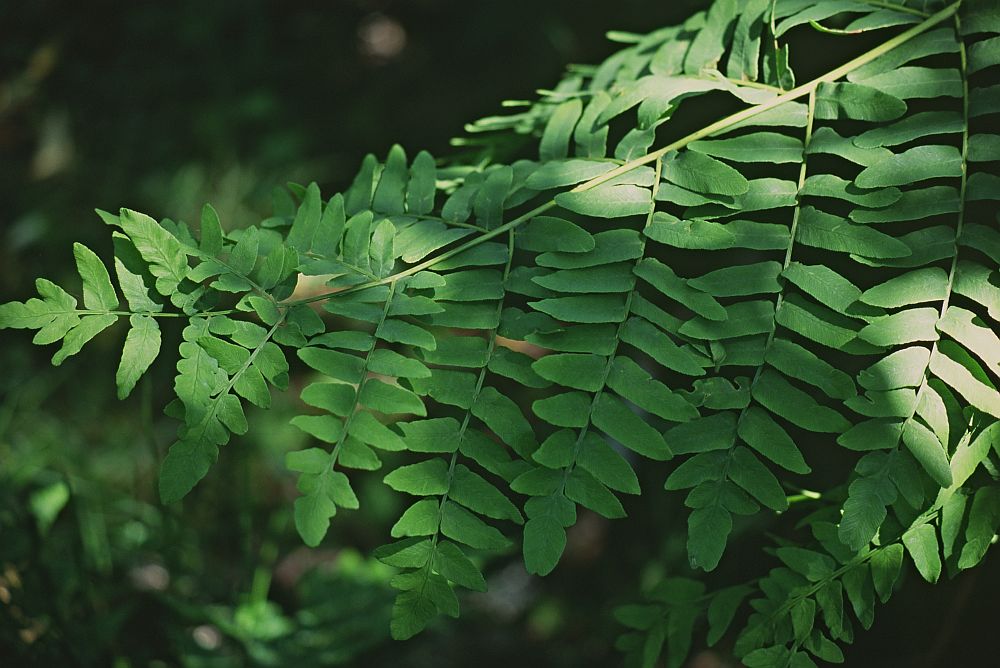Royal Fern Plants – How to Grow Royal Ferns in The Garden
In the world of horticulture, royal ferns are the queens of ponds, bogs, and wetlands. As you get serious about your gardening and it becomes clear it’s more than just another hobby, you might come across some challenges in maintaining and keeping your garden neat.
Many gardens seem to some corner that is always dark, drab, or where nothing ever grows. That’s where royal ferns come in.
They’re the cure for that sore spot in your garden and the right answer to your landscaping problems. Royal ferns act as a living decor that, apart from requiring less maintenance and care, improve the appearance of your garden tenfold with their graceful and soft beauty.

Royal Ferns at a Glance
Whether you live in a small apartment or a large house with a sprawling garden, the royal fern almost always fits within whatever landscape and settings you place it in. They shine in an atrium or a greenhouse as much as a barren batch in your garden where the poor light and even poorer soil won’t sustain any form of plant life.
Royal ferns (Osmunda regalis) have been around for millions of years and the royal ferns along with the other 9,000 species of ferns have a unique life cycle and some quirky habits.
For one thing, they’re non-flowering plants. As such they don’t produce seeds. Instead, royal ferns propagate using spores. Each spore contains both the male and female parts needed to create a new plant.
Other than that, royal ferns differ from other species of ferns both in shape, height, and habits. They grow for up to 5 feet when fully mature.
This osmunda regalis grows in colonies and forms a dense crow at the top which explains the royal name.
Unlike other ferns, the royal fern has fronds that contain both fertile and infertile parts. You can tell which is fertile by the color of the tip of the frond. A dark green tip with a tassel that turns reddish-brown is a dead giveaway that this is a fertile frond.
Varieties of Royal Ferns
Out of the thousands of fern species out there, only four are quite popular and acclimatized to the weather and conditions in North America. You can choose the one that works for you and your landscaping needs from this list.
- Cinnamon Fern (Osmunda cinnamomea): One of the most popular and colorful ferns you can come across in any garden, pond, or lake in the whole of North America. In the spring the fern starts green but as the summer winds down the leaves turn orange then brownish in the fall. The leaflets are also characterized by small woolly hairs underneath them.
- Interrupted Fern (Osmunda claytoniana): The fronds of this species are green all the time until they fall off in late September. However, they are split in the middle or rather interrupted by pinnae. The pinnae grow in the center of the frond giving the plant its distinct vase shape. The mature plant grows to about 2 to 3 feet making it suitable for small spaces.
- Royal Fern (Osmunda regalis): They start as reddish-purple when young before the leaves turn green when fully grown. In the summer the royal fern turns brown. Another related species, the Osmunda spectabilis has slender forms but looks every bit like the royal fern.
- Osmunda Ruggii: One of the rarest ferns to be found in this part of the world. It’s a hybrid that occurs naturally when both the claytoniana and regalis grow in close proximity. The hybrid is sterile and only few are documented across the United States. Some experts date it back 1,100 years ago.
How to Grow Royal Ferns
Since planting the royal ferns is similar to other species of ferns as long as you get your hands on the spores, we will focus here on the different conditions you need to provide the deciduous plant to ensure its success.

Soil
Royal ferns are not very particular about the type of soil you pour into the pot. While a peaty and slightly acidic soil is a perfect choice, many royal ferns grow and thrive in different kinds of soil from the condensed clay to a sandy one. To help the royal fern to a good start, add in plenty of organic material and compost. The fern can still do away with any fertilizer, organic or chemical, as long as it gets enough water.
Temperature
Despite their tropical and subtropical origins, royal ferns can survive, and actually prefer, moderate to cool temperatures. The reason being, in the wild, ferns often grow under large canopies which shield them from direct sunlight and high temperatures.
On average, make sure that the temperature is between 60 and 72 degrees F. Below that the fern will struggle and might die. In high temperature, the leaves turn yellow and spores become less if they develop at all.
Outdoor royal ferns need to be placed in cool and shady places to the north or east of your lawn or garden.
Humidity
The biggest challenge that most horticulturalists grow royal ferns indoors is how to maintain the high levels of humidity that this tropical plant is used to. On average a 40 to 50 percent humidity level is needed. However, royal ferns are known to tolerate humidity as low as 30 percent.
Dry climates do not encourage the fern to grow or produce spores. To get over the issue of low humidity, you can install a humidifier in the room. A more cost-effective solution is to place the pots of royal fern in trays of water. Fill the trays with rocks and add water.
Light
Different species of ferns require different light conditions. Holly ferns for example can survive in dim-lit rooms while bird nest ferns would tolerate bright light as long as it’s not from the direct sun.
The light needs of the royal fern fall somewhere in between those two extremes. So you can place the royal fern pot on a window sill facing the north and keep a light curtain drawn to shade it from the sun. If there’s too much light in the room, use drapes to protect the ferns from the glare and create the right conditions for them to grow.
Royal Fern Care
You won’t come across a plant that needs so little of your time and attention as the royal fern. So don’t let the “royal” in the name fool you. This plant can survive on its own without much input from you.

Watering
While you may not need to worry about fertilizing the royal fern or coming up with the right soil mix or pH, when it comes to watering, things can get a little complicated. Royal ferns love soaked soil and their favorite locations are near ponds, lakes, and in wetlands of every type.
To ensure your fern is getting its sufficient needs of water you can immerse the pot in a tub or the kitchen sink. Once the soil is soaked, remove the pot, dry it with a towel then place it back near the window. How much water your royal fern needs depends on the weather, humidity levels, and the type of soil. In high humidity, it will not need much watering as compared to drier climates.
Pruning
That’s one of the things that make royal ferns such a staple in many houses. They hardly need any grooming from you. For one thing, the plants are not known for their fast growth rates. So you won’t need to prune them to keep them in check. However, occasionally, you’ll find a dead frond which needs to be removed or one that is broken.
Clearing dead fronds not only maintains the beauty of the plant but also helps it grow successfully. Also, pay attention to the hairs at the bottom of the leaflets and the tassels at the tip of the fronds. They might get cluttered or create clamps that need your intervention to untangle that mess.
Repotting
Over the years, the royal fern will outgrow its pot. It’s not just that the root system becomes cramped in there and needs more room, but also the soil itself becomes depleted of nutrition. Once again, you should ignore the “royal” in the name and treat this plant a little rough.
The roots tend to cling to the sides of the pot and will take some force and rough treatment to yank them out of the pot. That’s fine though. The roots are sturdy and won’t be damaged. Plant it in a larger pot and cover the roots with soil.
Benefits and Uses of Royal Ferns
The royal fern has some environmental benefits. Ecologists rely on the plant to measure the levels of pollutants in the streams and waterways. Layers from the rhizomes absorb and store pollutants and toxins in the water.
The fern also has other uses in the textile and weaving industries. Fiber extracted from the royal fern is used to make baskets, ropes, nets, and clothes. In traditional medicine, the Mohawks used royal ferns to make sick-beds and in sweat lodges to treat nervous system diseases.